Assembled Elegance of Beauties Album (丽姝萃秀图册)
A Qing Dynasty Masterpiece of Literary-Pictorial Synthesis (1738)
Overview
Painted by Hedazi (赫达资, active during the Qianlong reign) and inscribed by Liang Shizheng (梁诗正, 1697–1763), this 12-leaf silk album (30.1 cm × 22.5 cm per leaf) exemplifies the Qing court’s fusion of meticulous gongbi (工笔) painting and scholarly calligraphy. Commissioned in 1738 and housed in Taipei’s National Palace Museum, it depicts twelve legendary women from Chinese history, blending moral allegory with aesthetic refinement.
Content & Cultural Context
Twelve Heroines and Poetic Pairings
- Xi Shi (西施): The “Four Beauties” icon, shown rinsing silk by a stream, paired with Wang Wei’s poem lamenting her fate as a political pawn.
- Qin Luofu (秦罗敷): A Han-era virtuous wife, depicted holding mulberry leaves, accompanied by Du Shenyan’s verses praising her resilience.
- Qin Nongyu (秦弄玉): Mythical flute-playing daughter of Duke Mu of Qin, illustrated with Fang Gan’s ode to her musical transcendence.
- Lady Li (汉李夫人): Emperor Wu of Han’s beloved consort, portrayed with Li Shangyin’s elegiac lines on impermanent beauty.
- Zhuo Wenjun (卓文君): The Han dynasty poetess who eloped with Sima Xiangru, matched with Li Qunyu’s romantic quatrains.
- Cai Wenji (蔡文姬): The Eastern Han scholar captured by Xiongnu, contextualized by Xie Yan’s tà gē (踏歌) folk lyrics.
- Wu Liju (吴丽居): A Southern Dynasties courtesan, paired with Empress Xu’s palace poetry celebrating feminine grace.
- Princess Shouyang (寿阳公主): Legendary inventor of plum-blossom makeup, accompanied by Yang Ronghua’s floral imagery.
- Mulan (木兰): The Northern Wei cross-dressing warrior, illustrated with Du Mu’s epic stanzas on battlefield valor.
- Gongsun Daniang (公孙大娘): Tang dynasty sword-dance master, juxtaposed with Du Fu’s vivid descriptions of her kinetic artistry.
- Hongxian (红线): A Tang-era female spy, paired with Leng Chaoyang’s covert-operation metaphors.
- Hongfu (红拂): The Sui dynasty heroine who eloped with Li Jing, accompanied by Wang Chong’s verses on her audacious escape.
Artistic Techniques
- Painting Style: Hedazi’s gongbi technique showcases:
- Palace Courtesan Aesthetics: Slender figures in layered robes with intricate patterns (e.g., Xi Shi’s gossamer sash).
- Architectural Precision: Jiehua (界画) ruler-drawn pavilions framing narratives, like Hongfu fleeing a vermilion-gated compound.
- Calligraphy: Liang Shizheng’s tiexue (帖学) script balances angular vigor (e.g., Mulan’s poem) with lyrical flourishes (Cai Wenji’s lament).
Political Symbolism
- Gender and Power: The album’s title 丽姝萃秀 (“Assembled Elegance”) subtly parallels Qianlong’s imperial harem selection process, where beauty and virtue were codified.
- Literati Ideals: By pairing heroines with Tang-Song poetry, the work bridges courtly wenren (文人) culture and folk storytelling—a Qianlong-era strategy to consolidate Han and Manchu identities.
Translation with Annotations
Original Chinese Text
此《丽姝萃秀图》(丽珠萃秀)册由清代赫达资绘、梁诗正书。全册共十二开(左诗右图)描绘历代女性人物事迹,依次为:西施、秦罗敷、秦弄玉、汉李夫人、卓文君、蔡文姬、吴丽居、寿阳公主、木兰、公孙大娘、红线、红拂。每幅均配有梁诗正书相关古人诗句。此册现藏于台北故宫博物院。
画册左幅为文臣梁诗正于清乾隆三年摘录古人诗句,对应着右侧所描绘的女性事迹。画册采用了宫苑仕女风格,对照诗句多流露出对其颂赞的寓意。台北故宫博物院著录为:赫達資畫麗珠萃秀,画册封面题名:赫達資畫麗姝萃秀。
作者款識:臣赫達資恭畫
梁诗正(1697 年—1763 年)字养仲,号芗林。浙江钱塘县人。清代大臣、书法家。雍正庚戌进士,乾隆时官至东阁大学士。卒谥文庄。
English Translation with Cultural Notes
“Assembled Elegance of Beauties Album”
Created in 1738 during Emperor Qianlong’s reign, this album unites Hedazi’s paintings and Liang Shizheng’s calligraphy to honor twelve iconic Chinese women. Each leaf follows a left-poem, right-image structure:
- Left Panels: Liang Shizheng transcribes Tang-Song poems using kaishu (楷书) regular script. For example, Du Fu’s lines on Gongsun Daniang’s sword dance:
“Her blade flashes like nine suns; / Her robes billow like celestial steeds.” - Right Panels: Hedazi renders figures in palace courtesan style—delicate faces with “three whites” eye technique (white pupils, eyelids, brow highlights).
Key Symbolism
- Xi Shi’s Silks: Her translucent garment symbolizes the fragility of beauty politicized.
- Hongfu’s Escape: The half-open vermilion gate and wind-tossed robes encode rebellion against patriarchal authority.
Viewing Guide for Western Audiences
- Zoom-In Details:
- Observe Mulan’s armor: Its fish-scale texture mimics Ming-Qing military regulations.
- Decode Cai Wenji’s zither: Missing strings allude to her captivity narrative.
- Comparative Art: Contrast with Chen Hongshou’s Heroines of History (1633) to see Qing idealization vs. Ming individualism.

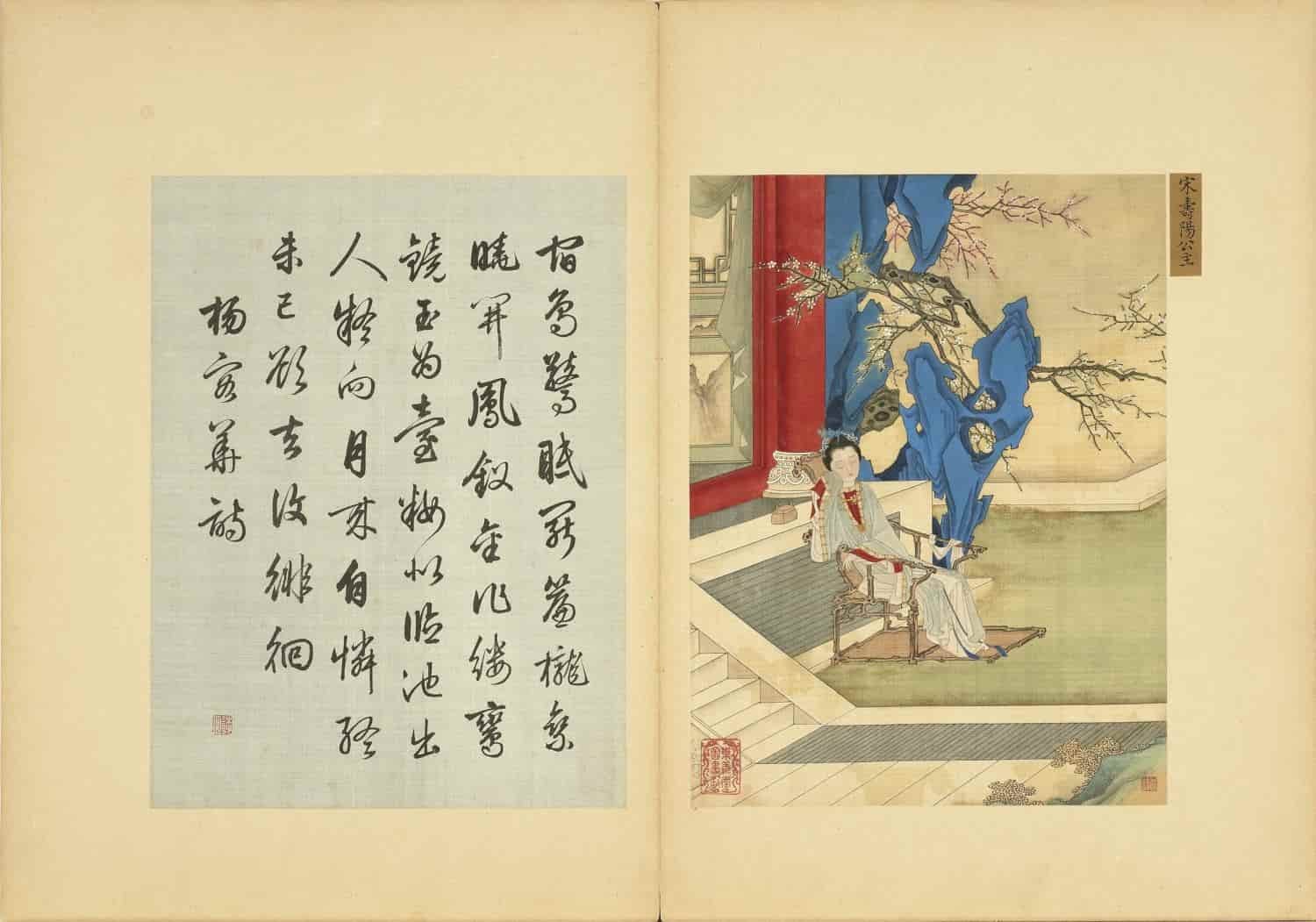
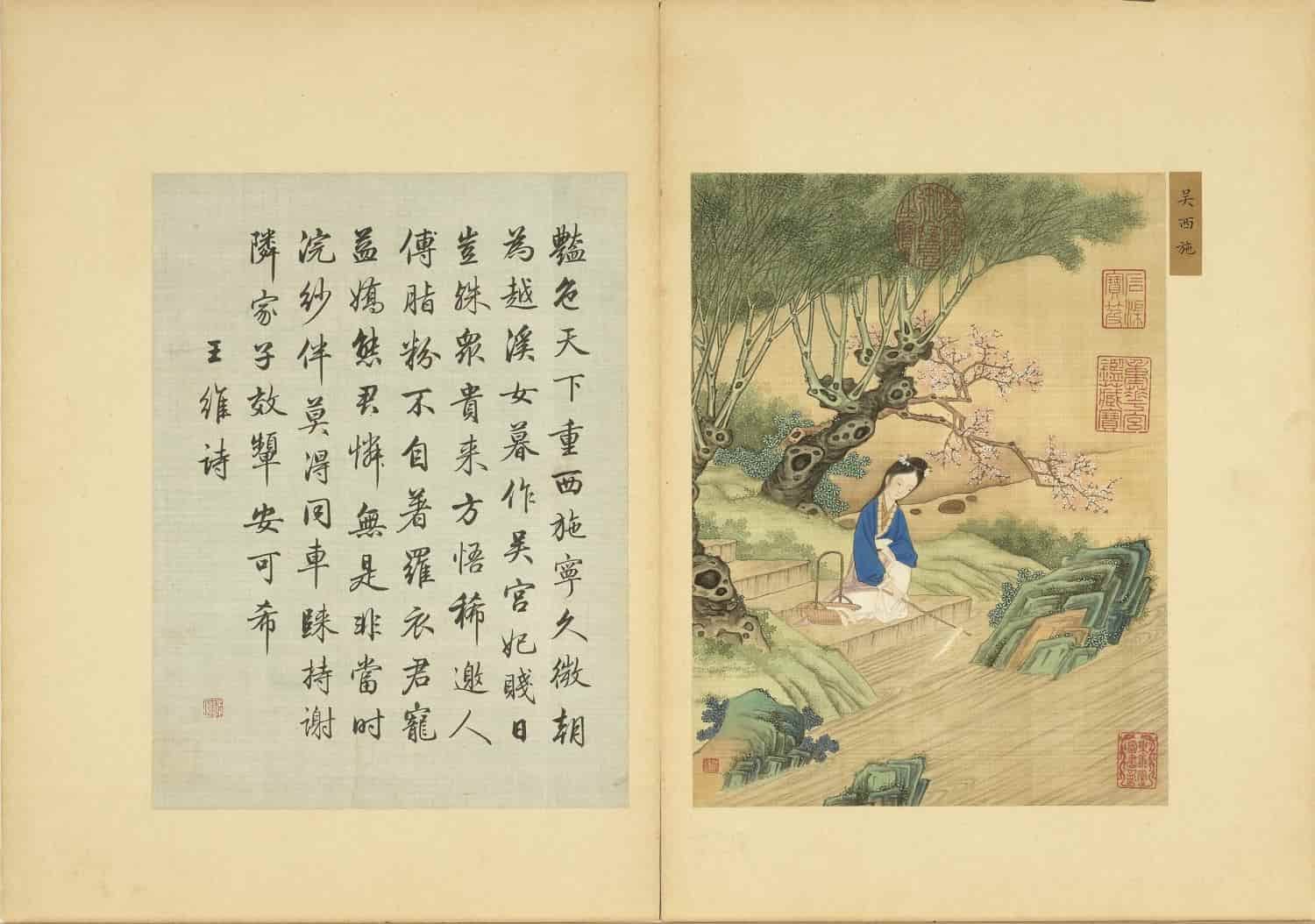
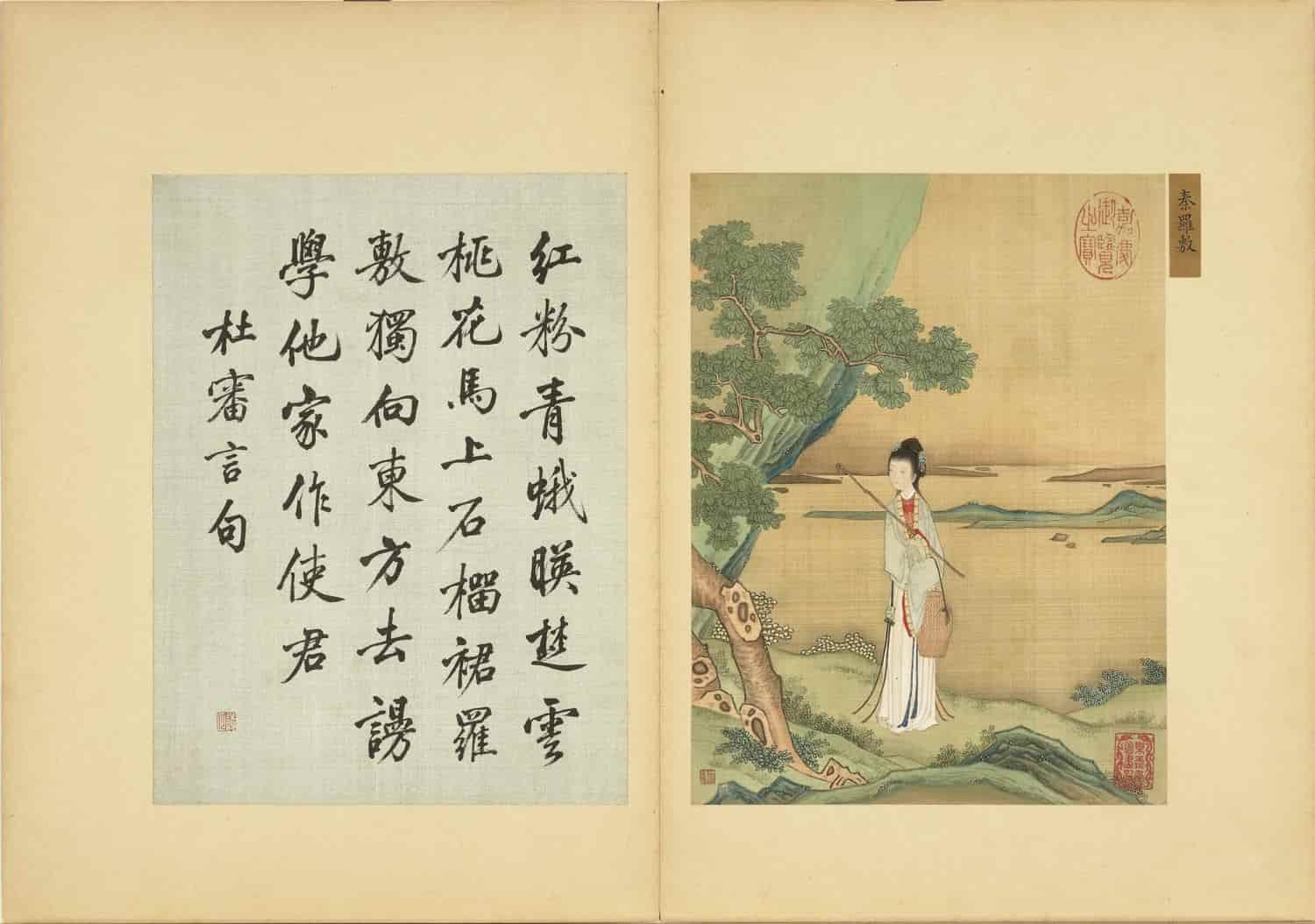
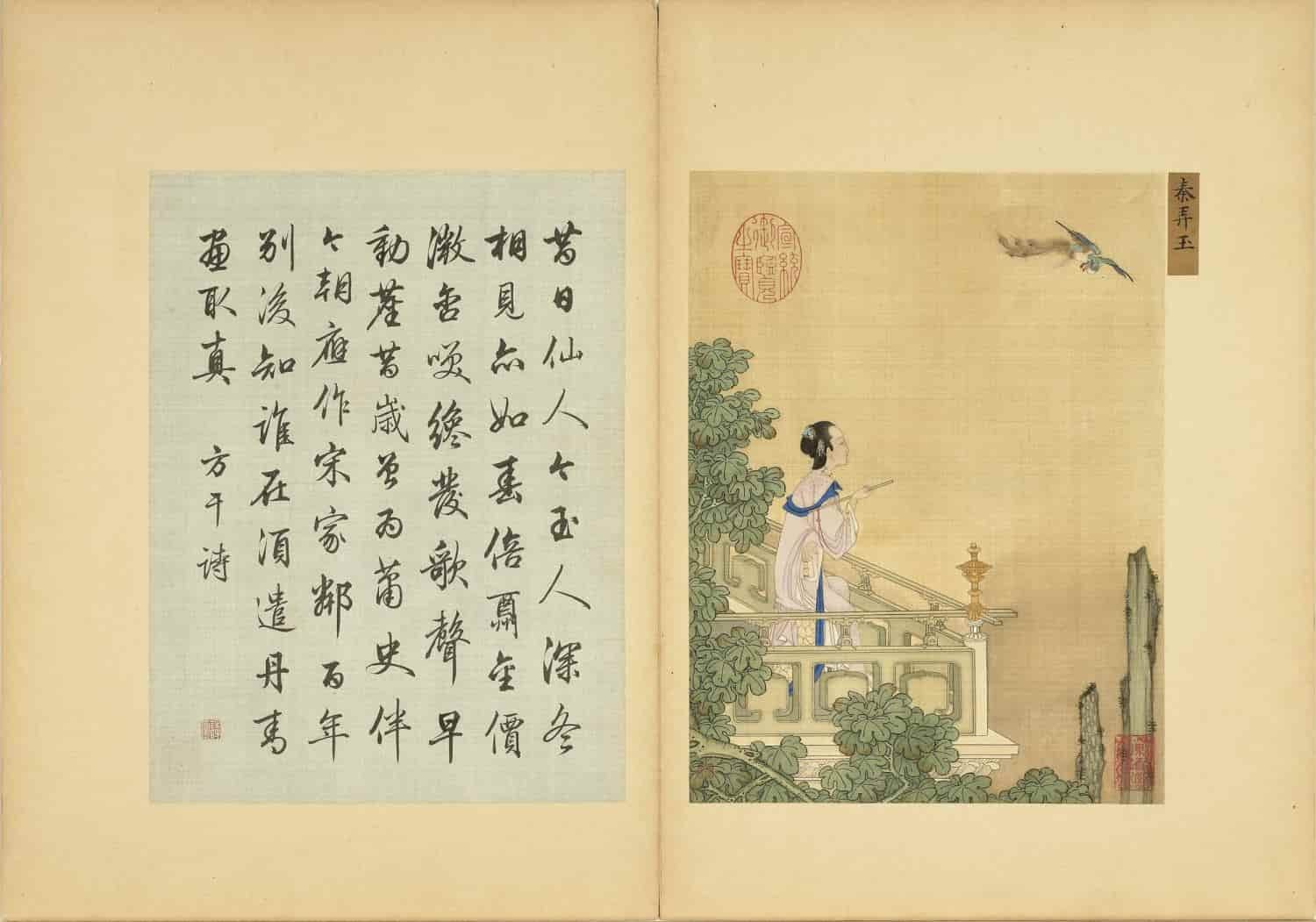
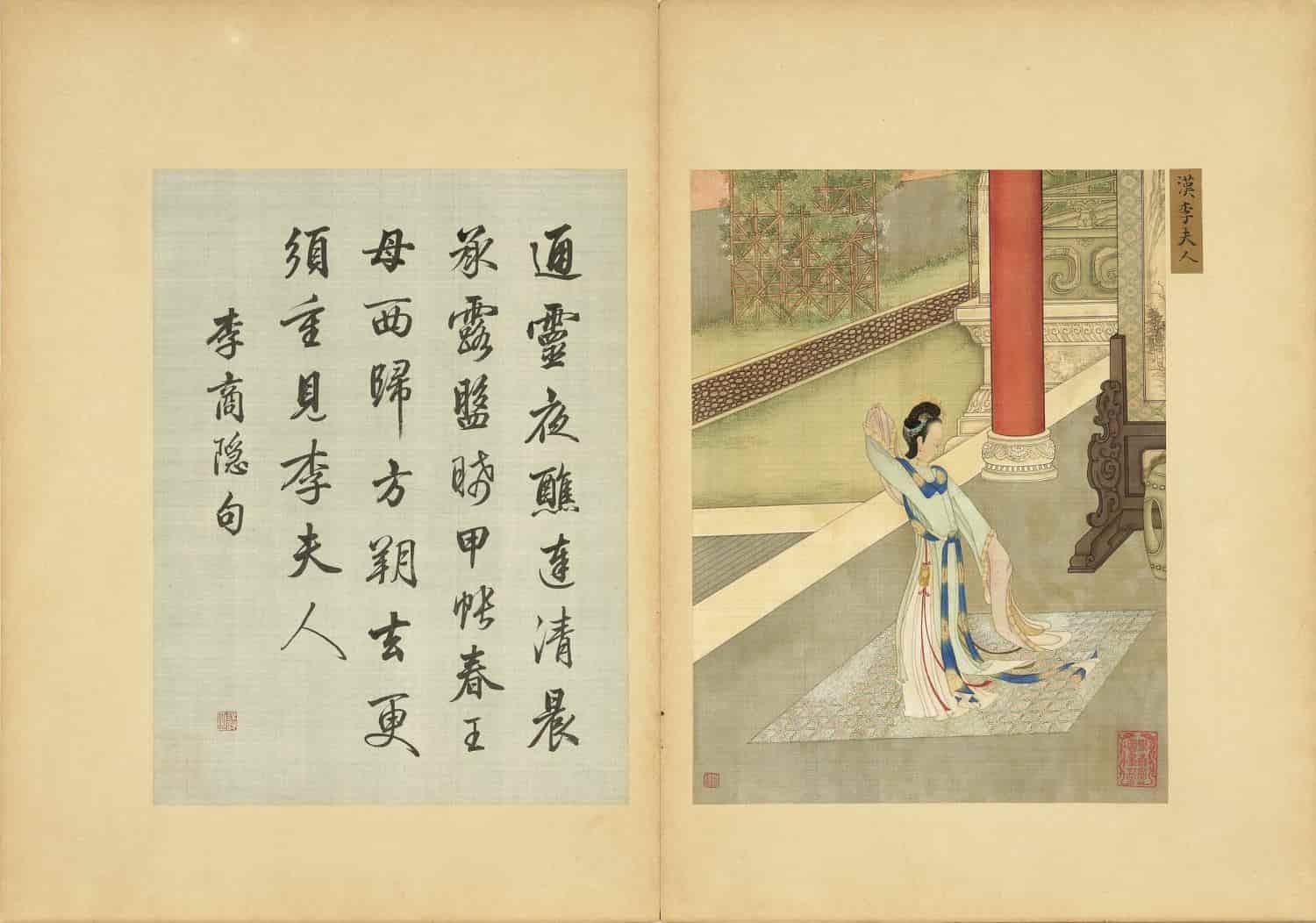
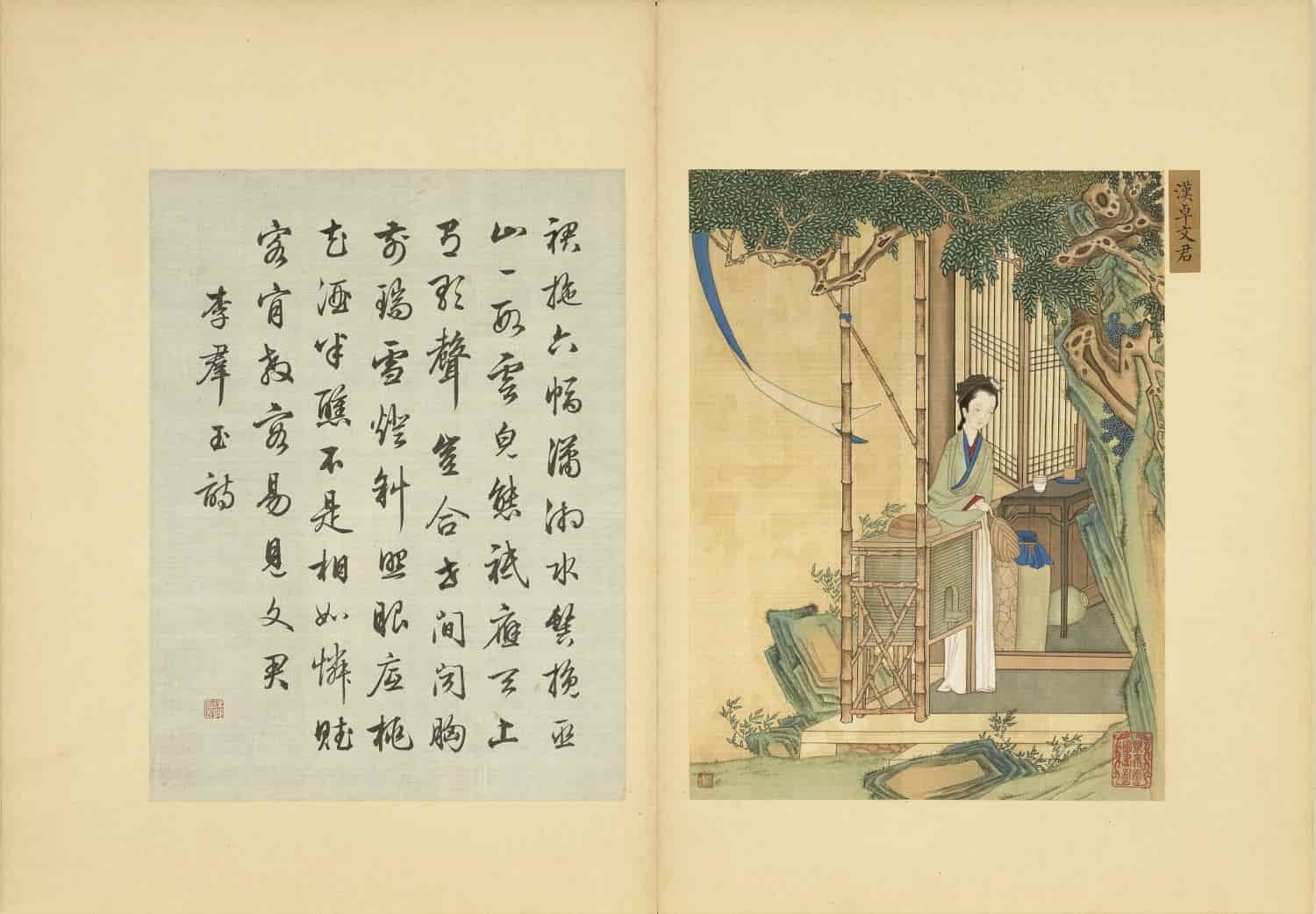
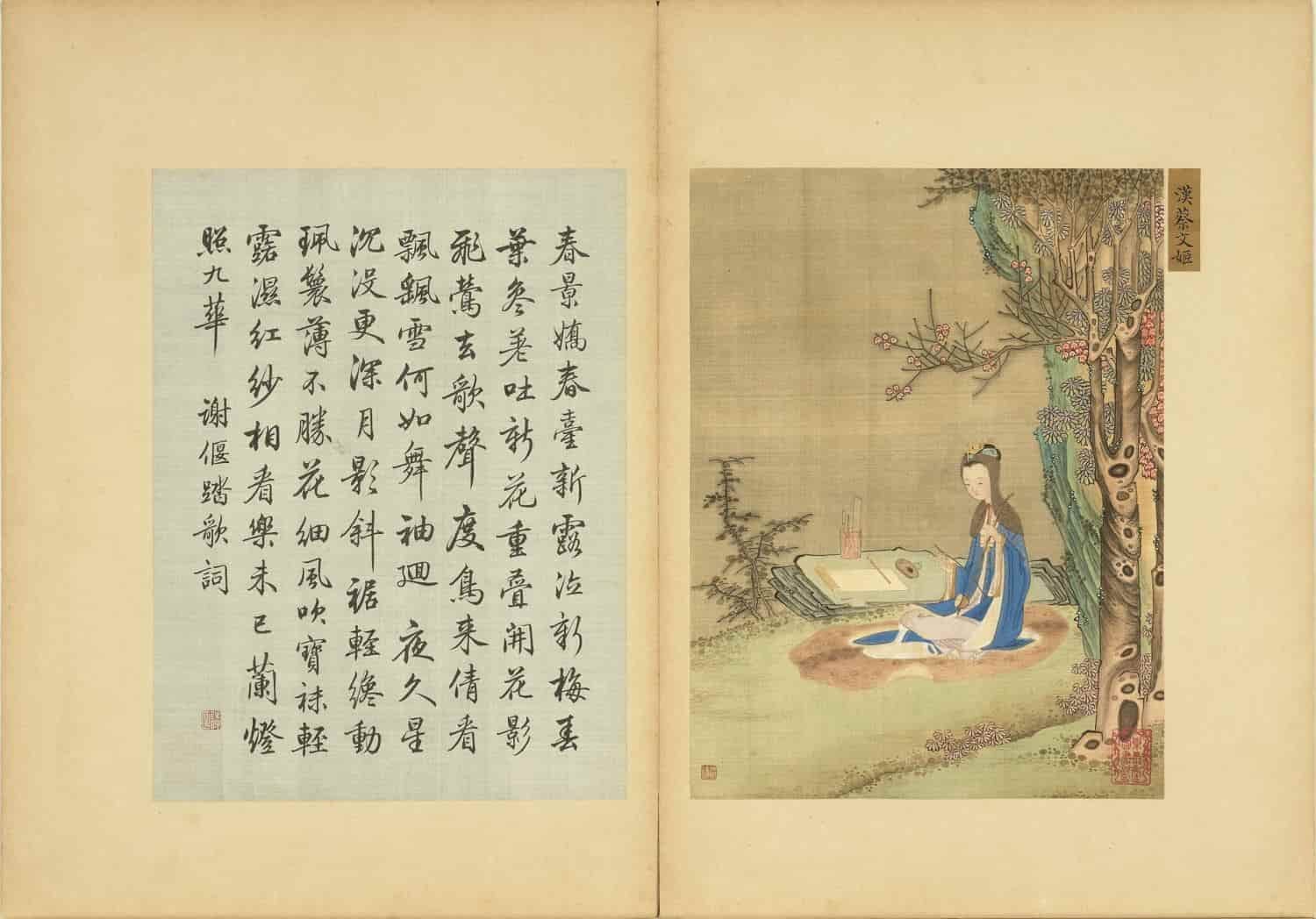
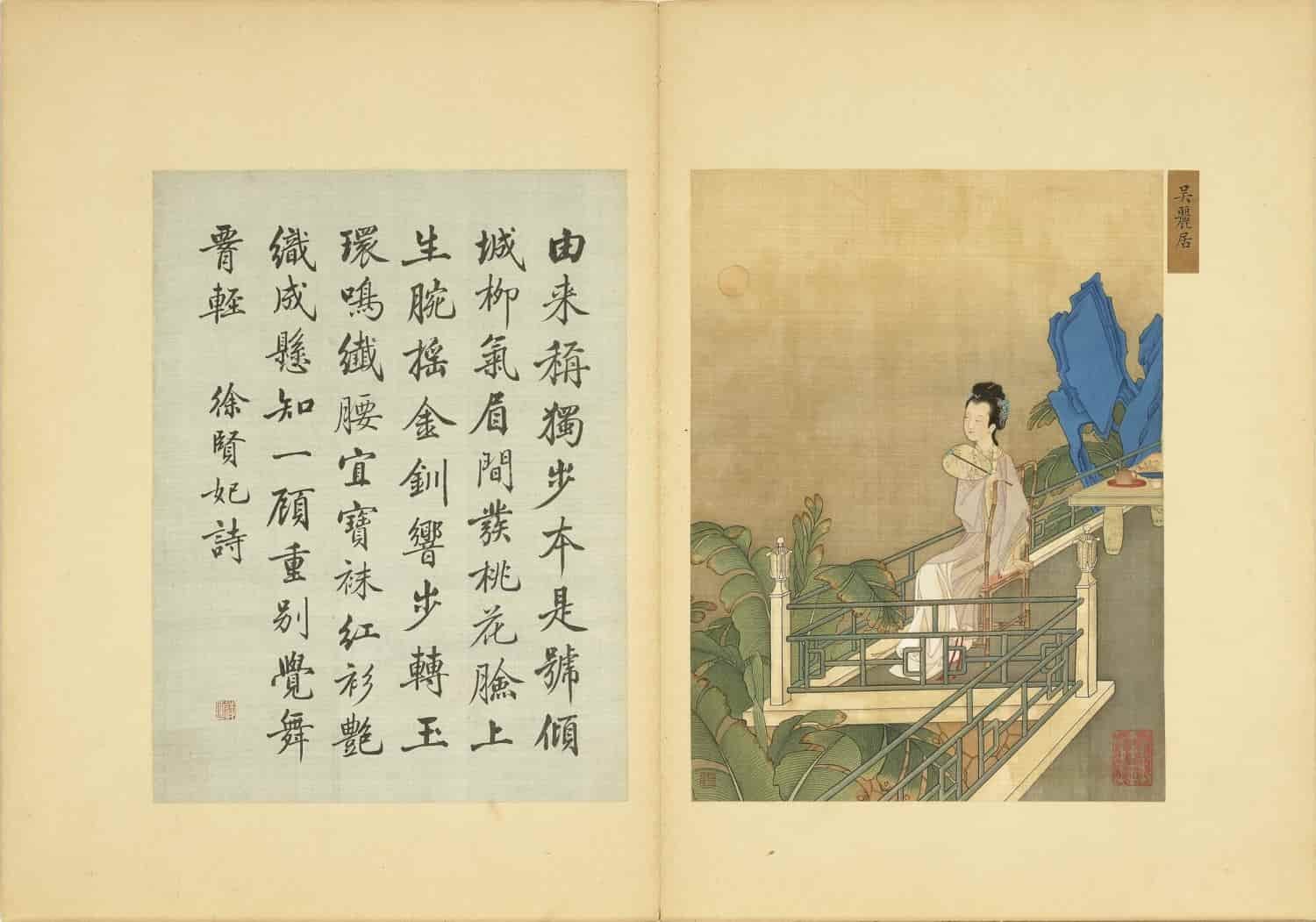
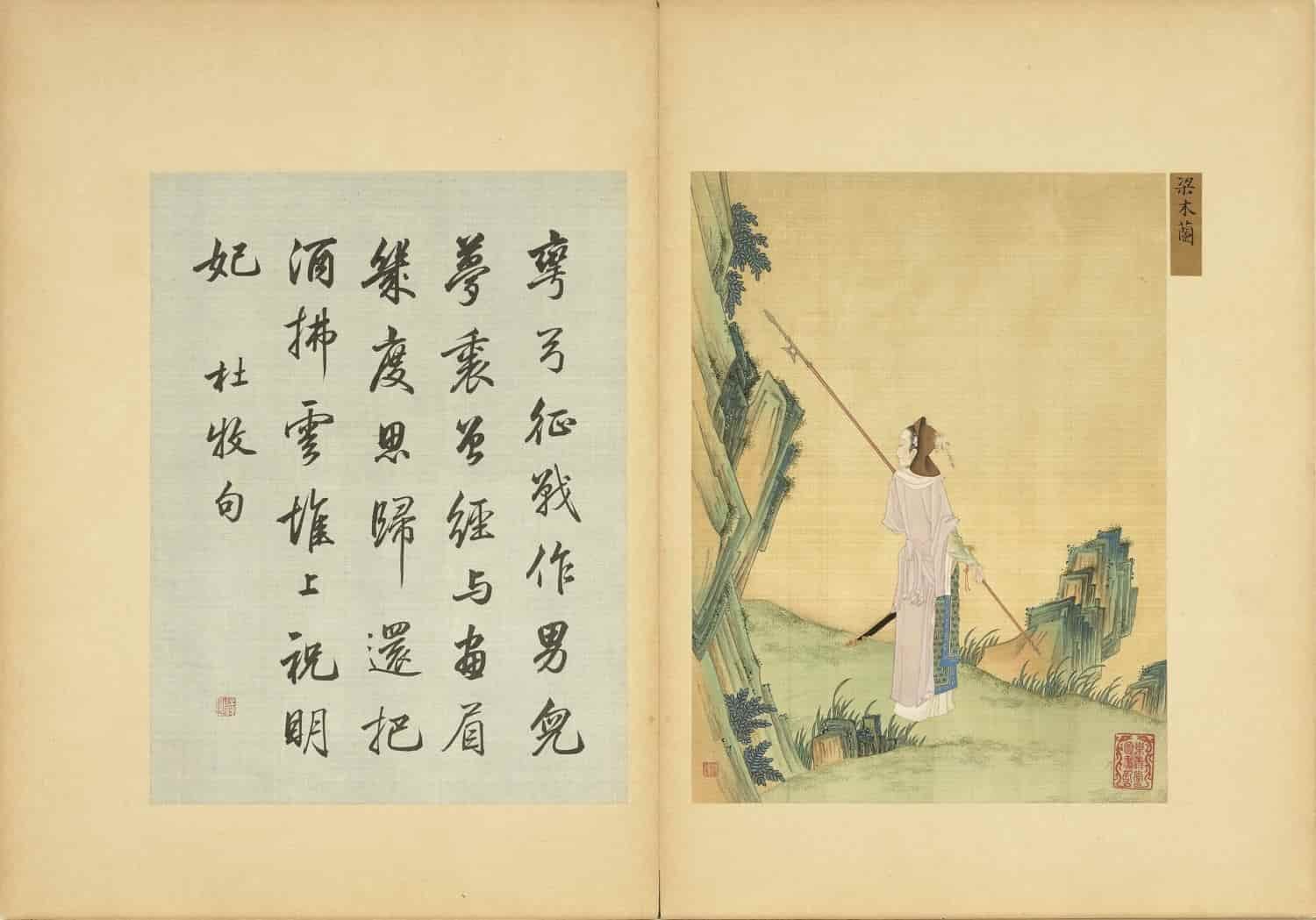
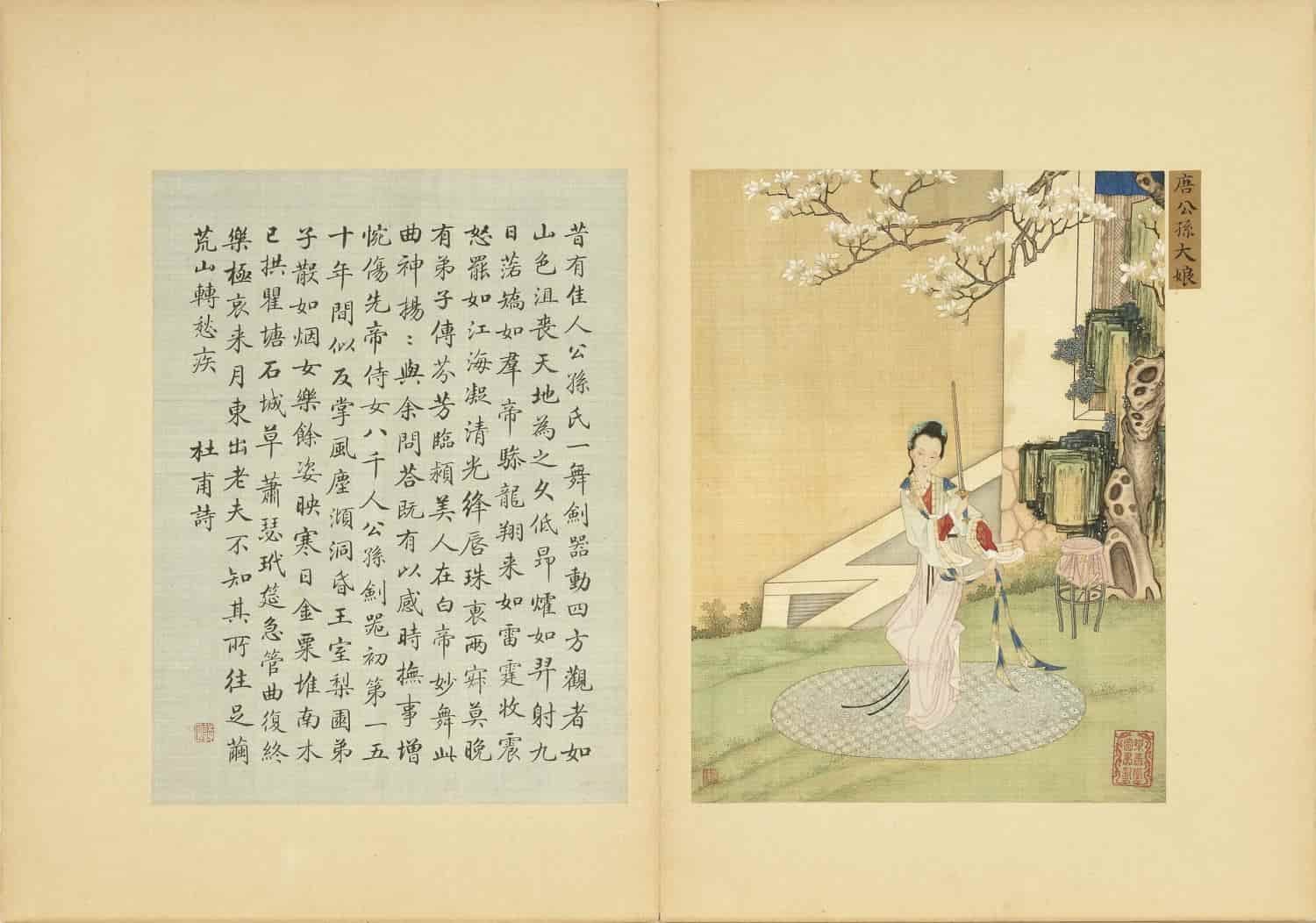
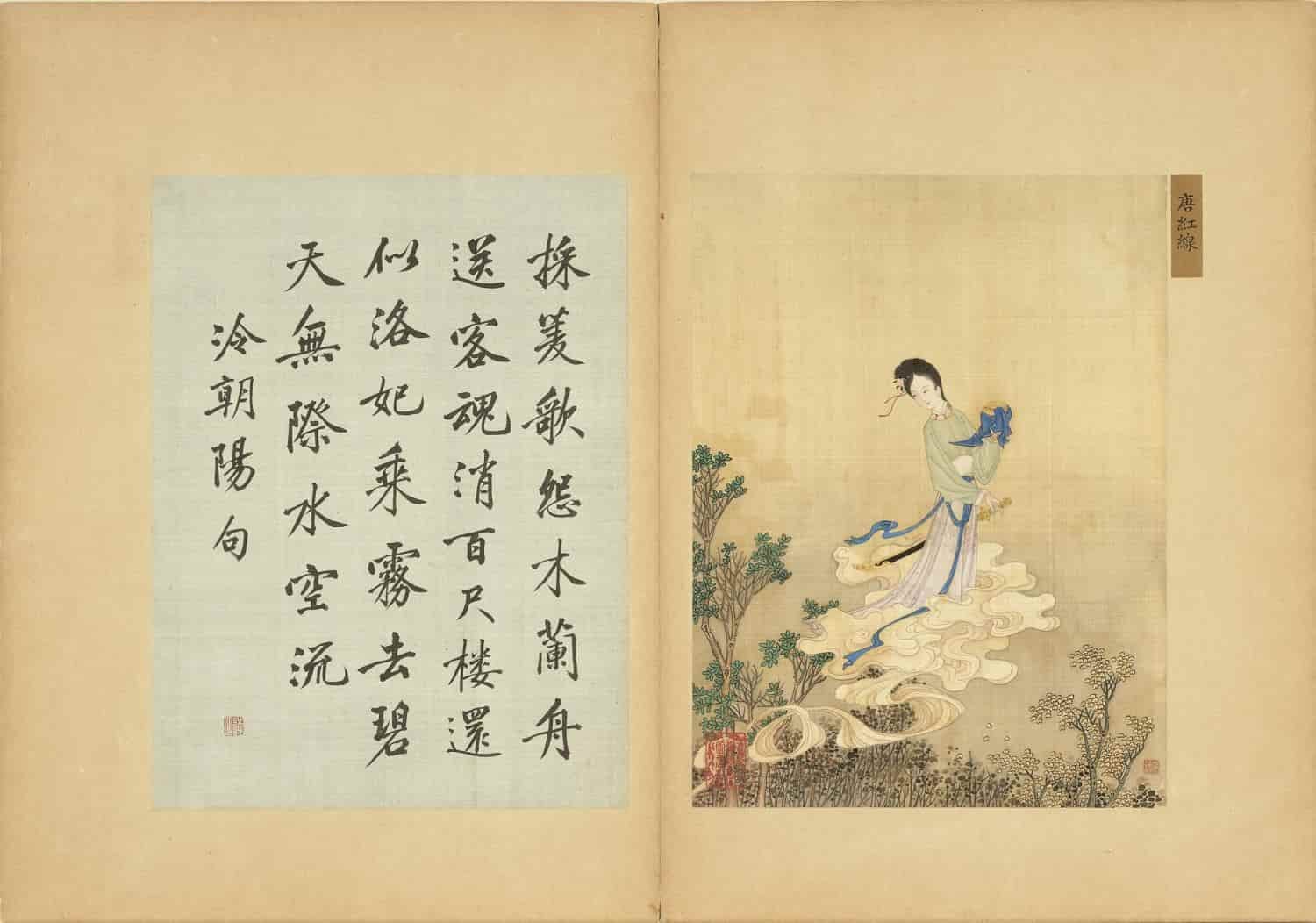
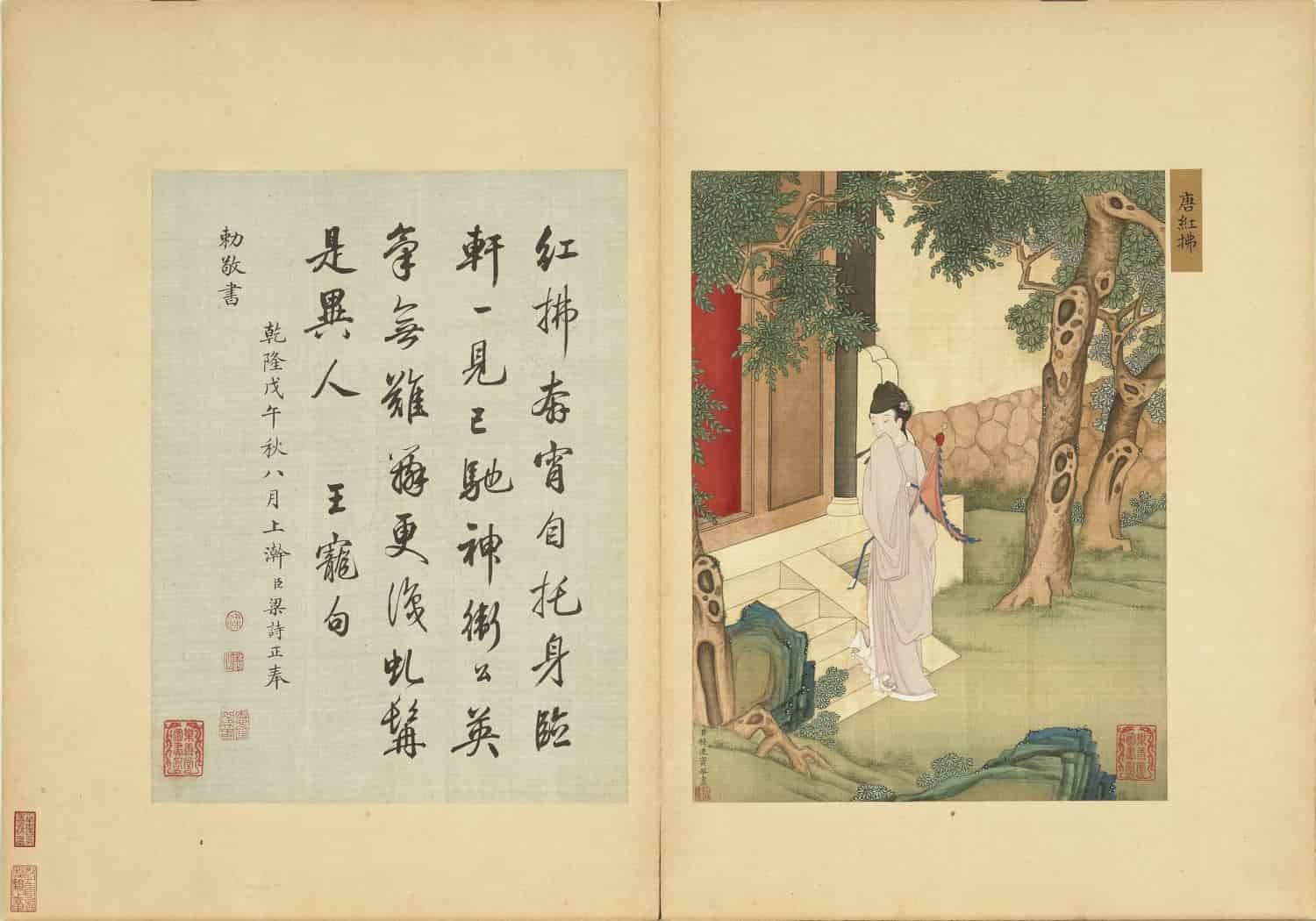
评价
目前还没有评价